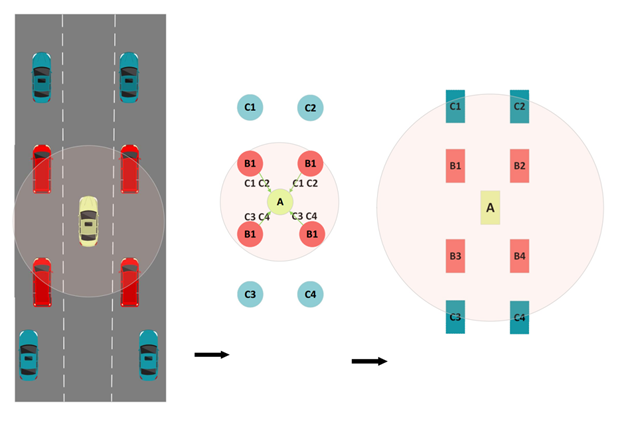Vehicle networking environment information sharing based on distributed fountain code
Published 03 February, 2024
Intelligent Transportation systems (ITS) have shown great potential in smart cities in recent years. Using information processing and communication technology, ITS significantly improves the quality of urban traffic operation and service. Autonomous vehicles (AVs), a key component of ITS, are able to sense their surroundings and operate without the need for human intervention. However, while autonomous vehicles have been deployed and tested in specific pilot areas, they still face challenges such as slow operation and long response delays. The root cause behind these problems is the limited perceptual range of a single vehicle, hindered by surrounding vehicles, buildings, and other obstacles.
In response to this limitation, a new study published in the International Journal of Intelligent Networks highlighted that in the vehicle network environment, vehicle movement speed is fast, topology changes frequently and packet loss rate is high.
“However, the existing TCP protocol timeout retransmission mechanism leads to frequent retransmission in complex vehicle-connected environments, resulting in a large number of invalid packets and reducing transmission efficiency,” says lead author Jianhang Liu.
To address these challenges, the research team proposes a data-sharing solution based on distributed fountain coding, called Vehicle Information Perception Method using Distributed Fountain Codes (VIPMDFC). To reduce the amount of data transferred, the researchers extracted features from the sensed vehicles and segmented and encoded the data using Fountain coding's powerful error correction capabilities, low retransmission rates and fast transmission speeds, thus improving the reliability of the transmission.
“We also dynamically adjusted the encoding length according to the environment to improve transmission efficiency,” shares Liu. “The proposed distributed fountain coding sharing method allows the receiver to accept encoded packets from different vehicles, avoids decoding failure caused by network anomalies of specific transmission vehicles, effectively solving the problem of high packet loss and prolonged delay in vehicle communication, and thus improving the reliability and efficiency of communication.”
In addition, the team introduced a trajectory prediction algorithm based on the attention mechanism codec model, which can predict the motion state of the object to compensate for the information delay caused by the network delay and reduce the frequency of information transmission.
This series of innovative initiatives marks an important step in improving the reliability and safety of autonomous driving systems and is expected to play a greater role in the future of smart cities.

Image: Multi vehicle collaboration expands perception range. CREDIT: The AUTHORS
Contact author details: Jianhang Liu, China University of Petroleum (East China), Qingdao, 266580, China, liujianhang@upc.edu.cn
Funder: This work is partially supported by the Shandong Provincial Natural Science Foundation, China under Grant ZR2020MF005, and National Natural Science Foundation of China 61972417.
Conflict of interest: The authors declare that they have no known competing financial interests or personal relationships that could have appeared to influence the work reported in this paper.
See the article: Jianhang Liu, Xinyao Wang, Haibin Zhai, Shibao Li, Xuerong Cui, Qian Zhang, A method of vehicle networking environment information sharing based on distributed fountain code, International Journal of Intelligent Networks,2024, ISSN 2666-6030,